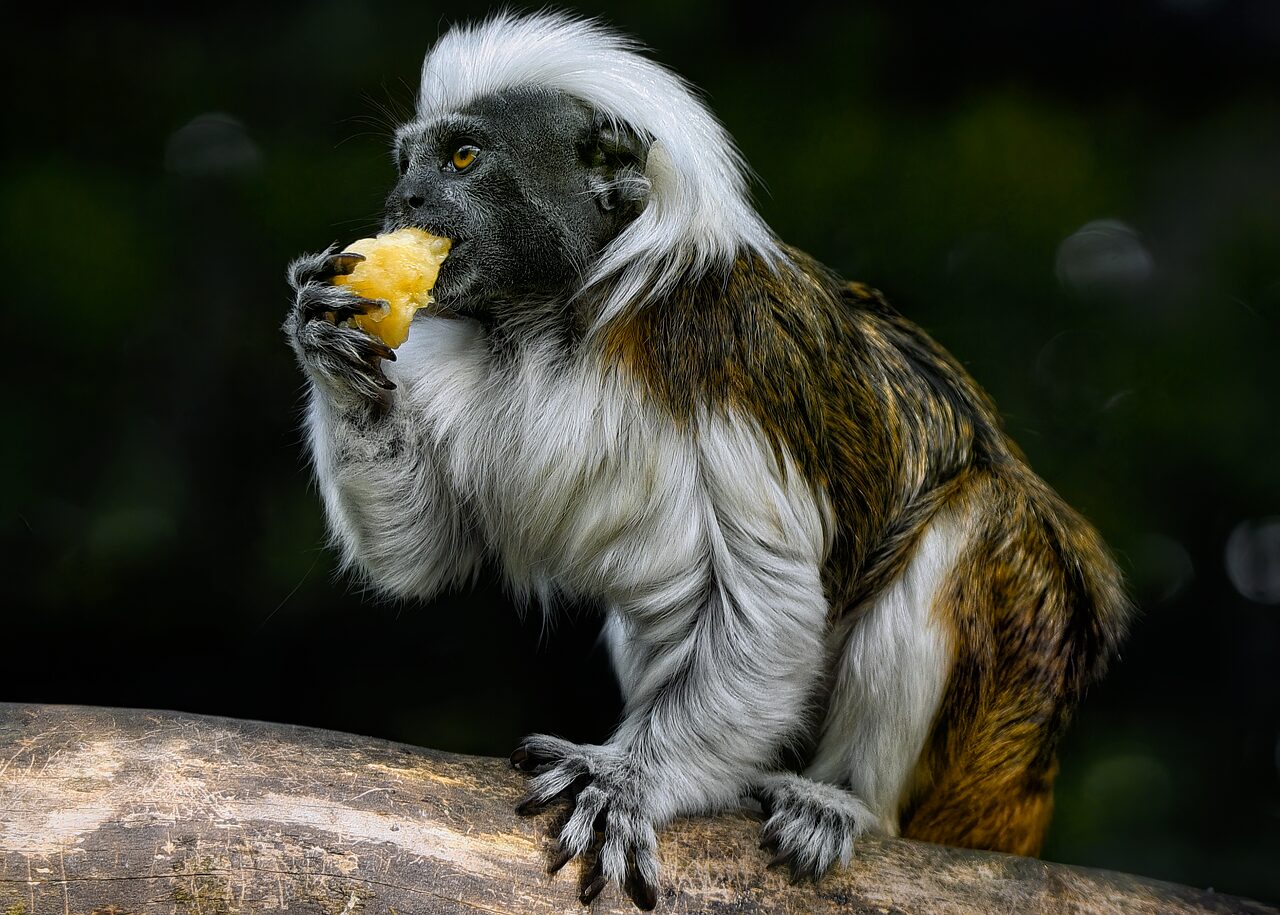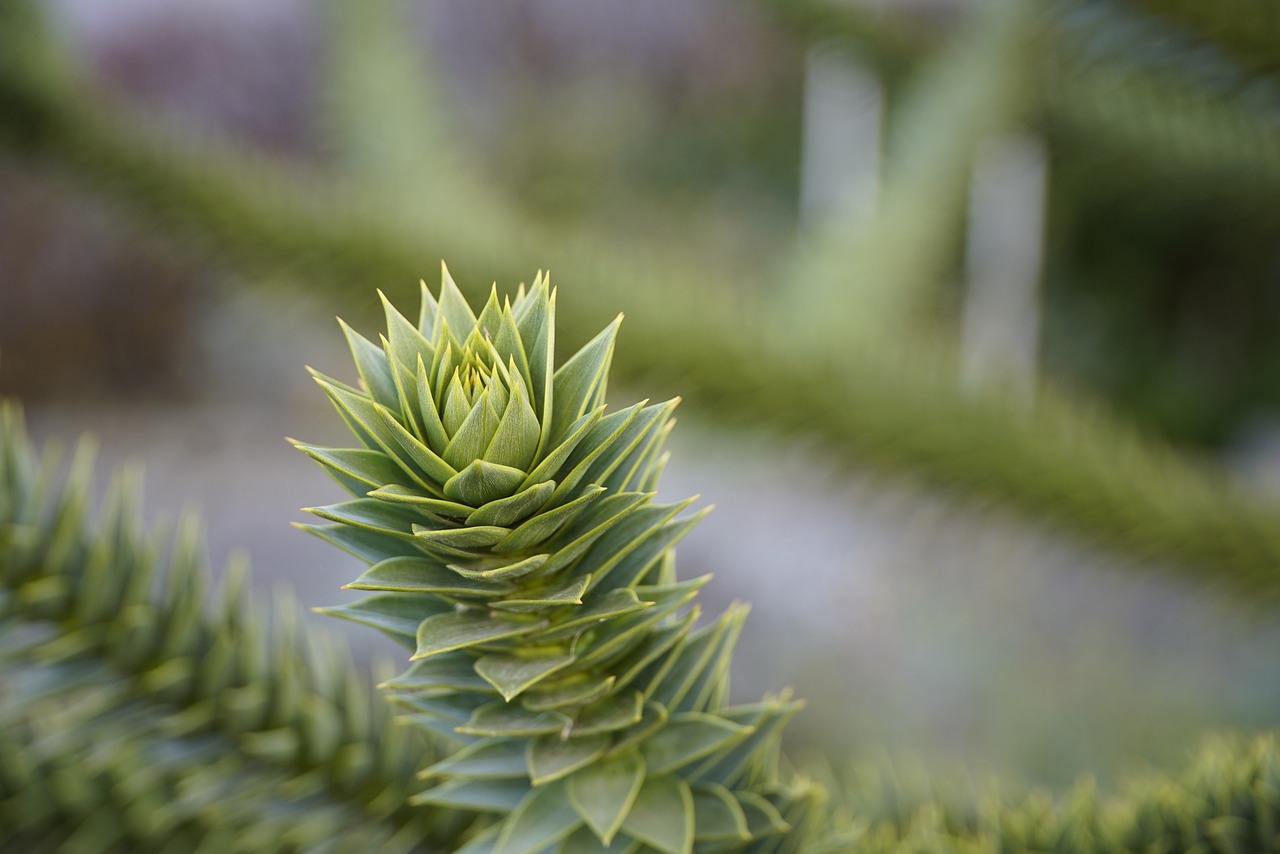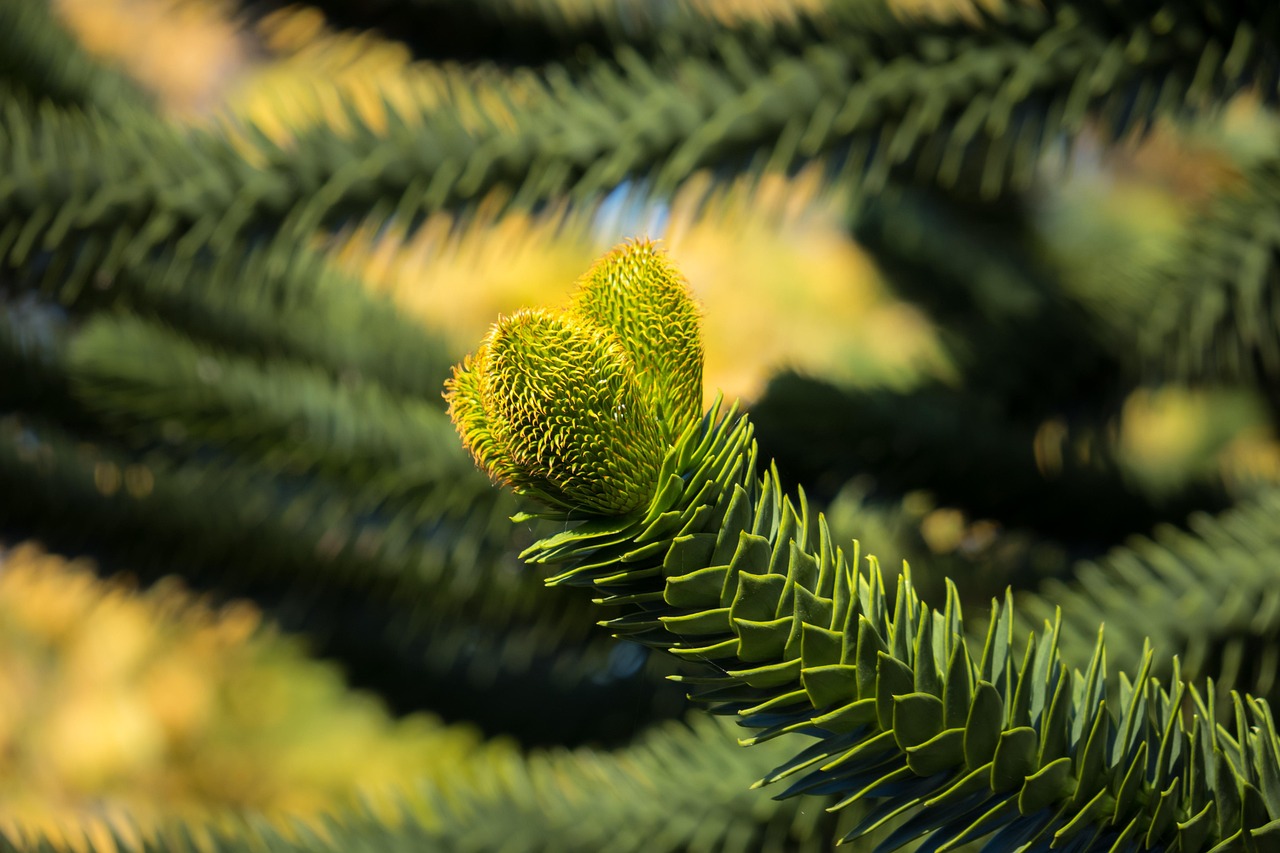The Monkey Puzzle tree (Araucaria araucana) typically exhibits slow to moderate growth rates in cool UK gardens, averaging around 12 to 24 inches per year under optimal conditions. Its growth can be influenced by factors such as soil quality, moisture levels, and sunlight exposure. Patience is essential, as full maturity may take several decades.
The Monkey Puzzle tree, known scientifically as Araucaria araucana, typically experiences a moderate growth rate in cool UK gardens, averaging about 12 to 24 inches per year under optimal conditions.
Understanding the Monkey Puzzle Tree
The Monkey Puzzle tree is a unique conifer native to the southern Andes in Chile and Argentina. Its distinctive, spiky leaves and unusual growth habit make it a popular choice for gardeners looking to add an exotic touch to their landscape. In the UK, this tree has become increasingly cherished for its adaptability to cooler climates.

Despite its name, the Monkey Puzzle tree is not a puzzle to grow. However, understanding its growth rate and care requirements is essential for successful cultivation in cooler regions such as the UK. The growth rate can be influenced by several factors, including soil quality, light exposure, and overall climate conditions.
Growth Rate Overview
The growth rate of the Monkey Puzzle tree can vary significantly based on environmental factors. In optimal conditions, these trees can achieve a height of 20 to 30 feet within a few decades. However, in less favorable circumstances, growth may slow considerably.
| Growth Conditions | Average Growth Rate (per year) | Expected Height (after 10 years) |
|---|---|---|
| Optimal conditions (full sun, well-drained soil) | 12-24 inches | 10-15 feet |
| Moderate conditions (partial shade, average soil) | 6-12 inches | 5-8 feet |
| Poor conditions (heavy shade, poor drainage) | Less than 6 inches | 2-4 feet |
Factors Influencing Growth Rate
Several factors play a crucial role in determining how quickly a Monkey Puzzle tree will grow. Understanding these factors can help gardeners create the best environment for their trees.

Soil Quality
The soil’s drainage and nutrient content significantly impact the growth of the Monkey Puzzle tree. These trees prefer well-drained, sandy soils with a slightly acidic to neutral pH. Heavy clay or waterlogged soils can lead to root rot and stunted growth.
Light Exposure
Monkey Puzzle trees thrive in full sunlight. They require at least six hours of direct sunlight each day to maximize their growth potential. Insufficient light can lead to slower growth rates and leggy trees that are less visually appealing.
Climate Considerations
Cooler climates like those found in parts of the UK generally suit Monkey Puzzle trees well. However, they are sensitive to extreme cold and frost. During harsh winters, young trees may struggle to survive if not properly protected.

Caring for Your Monkey Puzzle Tree
To encourage healthy growth, proper care and maintenance are essential. Here are some key tips for nurturing your Monkey Puzzle tree:
- Watering: Ensure consistent moisture during dry spells, especially in the first few years after planting.
- Mulching: Apply mulch around the base of the tree to retain moisture and suppress weeds.
- Fertilization: Use a balanced fertilizer in early spring to promote robust growth.
- Pruning: Minimal pruning is necessary; remove any dead or damaged branches as needed.
By paying attention to these care guidelines, gardeners can create an environment conducive to healthy growth and vibrant foliage. The Monkey Puzzle tree can become a stunning focal point in any garden when nurtured properly.
In summary, while the Monkey Puzzle tree may not grow as quickly in cooler UK gardens compared to its native habitat, with thoughtful care and consideration of its specific needs, it can thrive and provide beauty for many years to come.

Common Challenges in Growing Monkey Puzzle Trees
While the Monkey Puzzle tree can be a stunning addition to gardens in the UK, it does come with its own set of challenges. Understanding these potential issues can help gardeners prepare and mitigate problems effectively.
Pests and Diseases
Like many trees, the Monkey Puzzle tree can be susceptible to various pests and diseases. Awareness and early detection are crucial for successful management.
- Spider Mites: These tiny pests thrive in dry conditions and can cause leaf discoloration. Regular watering and maintaining humidity can help deter them.
- Scale Insects: Scale insects attach themselves to the branches and foliage, sucking sap and weakening the tree. Manual removal or an insecticidal soap can be effective treatments.
- Root Rot: Overwatering or poor drainage can lead to root rot, a serious condition that can kill the tree. Ensuring well-drained soil is essential to prevent this issue.
- Fungal Infections: Fungal diseases such as Phytophthora can affect the tree’s health. Proper spacing and air circulation can reduce the likelihood of infection.
Environmental Stressors
The Monkey Puzzle tree is relatively hardy but can still experience stress from environmental factors. Understanding these stressors can help in providing better care.
- Temperature Fluctuations: While these trees tolerate cooler climates, they can be sensitive to sudden temperature changes. Protecting young trees with frost cloth during unexpected cold snaps is advisable.
- Drought: Extended dry periods can stress the tree. Keeping an eye on weather patterns and watering accordingly is crucial for maintaining health.
- Soil Compaction: Heavy foot traffic or machinery can compact the soil, leading to poor root development. Mulching or creating designated paths can help alleviate this issue.
Optimal Planting Locations
Selecting the right location for planting a Monkey Puzzle tree is vital for its growth. Here are some key considerations for choosing an optimal spot in your garden:
Sunlight Requirements
As mentioned earlier, Monkey Puzzle trees thrive in full sunlight. A location that receives at least six hours of direct sunlight daily will promote healthy growth and vibrant foliage.
Soil Type
The type of soil significantly affects the growth rate of a Monkey Puzzle tree. Ideally, the soil should be:
- Sandy Loam: This type of soil offers good drainage and nutrients, which are crucial for healthy root development.
- Moderately Acidic: The tree prefers a pH level between 6.0 and 7.0. Conducting a soil test can help determine if amendments are needed.
Space Considerations
Monkey Puzzle trees can grow quite large, so providing ample space for their mature size is essential. When planting, consider the following:
- Distance from Structures: Plant trees at least 10 to 15 feet away from buildings or fences to prevent overcrowding and potential damage.
- Spacing Between Trees: If planting multiple trees, space them at least 20 feet apart to allow for proper air circulation and growth.
The Role of Climate in Growth Rate
The UK’s climate can vary greatly, affecting how quickly a Monkey Puzzle tree grows. Understanding these climate factors is essential for predicting growth rates.
Rainfall Patterns
The UK generally experiences moderate rainfall, which can be beneficial for Monkey Puzzle trees. However, during particularly dry spells, supplemental watering may be necessary. Consistent moisture helps maintain growth rates.
Wind Exposure
Strong winds can damage young trees and impede growth. If your garden is exposed to high winds, consider planting near windbreaks or using protective measures to shield the young tree until it is well-established.
Cultivation Techniques for Enhanced Growth
Gardeners looking to maximize growth rates may consider various cultivation techniques that promote healthy development of their Monkey Puzzle trees.
- Soil Amendments: Incorporating organic matter into the soil at planting time can improve fertility and drainage.
- Irrigation Systems: Installing a drip irrigation system ensures consistent watering without waterlogging the roots.
- Regular Monitoring: Keeping an eye on the tree’s health allows for early intervention if any issues arise.
By being proactive about these challenges and considerations, gardeners can create an environment where their Monkey Puzzle trees flourish beautifully over the years.
Seasonal Growth Patterns
The growth rate of the Monkey Puzzle tree can vary throughout the year, influenced by seasonal changes in temperature, light, and moisture. Understanding these patterns can help gardeners optimize care for their trees.
Spring Awakening
Spring is a critical period for the Monkey Puzzle tree as it emerges from dormancy. During this time, the tree begins to actively grow, and the following practices can enhance growth:
- Fertilization: Applying a balanced fertilizer in early spring provides essential nutrients that support new growth.
- Pruning: While minimal pruning is generally needed, any dead or damaged branches should be removed in the spring to encourage healthy development.
- Soil Preparation: Spring is an excellent time to amend the soil with organic matter to enhance fertility and drainage.
Summer Growth
During summer, the Monkey Puzzle tree experiences its most vigorous growth. Adequate moisture and sunlight are crucial during this active growing phase.
- Watering Schedule: Regular watering is essential, especially during dry spells. Deep watering encourages strong root development.
- Mulching: Adding mulch helps retain soil moisture and suppress weeds during the hot summer months.
- Pest Monitoring: Keep an eye out for pests such as spider mites and scale insects, which can thrive in warm conditions.
Autumn Preparations
As temperatures begin to drop in autumn, the growth of the Monkey Puzzle tree slows down. This period is important for preparing the tree for winter.
- Final Watering: Ensure the tree has adequate moisture before winter sets in. This can help prevent drought stress during colder months.
- Leaf Cleanup: Raking fallen leaves around the base of the tree can prevent fungal diseases and improve air circulation.
- Winter Protection: For young trees, consider wrapping the trunk with burlap to protect against frost damage.
Long-Term Care Strategies
To maintain a healthy growth rate over the years, long-term care is essential. Establishing a routine care schedule can ensure that your Monkey Puzzle tree remains vibrant and healthy.
Regular Inspections
Conducting regular inspections can help catch problems early. Look for signs of distress such as yellowing leaves or stunted growth. Early intervention can prevent more significant issues.
Proper Pruning Techniques
While Monkey Puzzle trees do not require extensive pruning, proper techniques are important when necessary. Consider the following guidelines:
- Timing: Prune during late winter or early spring before new growth begins.
- Tools: Use clean, sharp tools to make clean cuts that minimize damage to the tree.
- Cuts: Focus on removing dead or broken branches and maintaining an open canopy for air circulation.
Impact of Urban Environments
Growing Monkey Puzzle trees in urban gardens presents unique challenges and opportunities. Urban conditions can significantly affect growth rates and overall health.
Soil Compaction and Quality
Urban gardens often face soil quality issues due to compaction and pollution. Improving soil health is essential for successful growth:
- Aeration: Aerating the soil can help reduce compaction and improve water infiltration.
- Soil Testing: Conducting soil tests can identify deficiencies and guide appropriate amendments.
Pavement and Shade Considerations
Pavement and surrounding structures can create shade or heat islands that affect growth. When planting in urban areas, consider the following:
- Location Selection: Choose locations that maximize sunlight exposure while minimizing competition from nearby structures.
- Microclimates: Be aware of how nearby buildings or pavement might create microclimates that could influence growth.
The Role of Community and Resources
The success of cultivating Monkey Puzzle trees can also be enhanced through community involvement and access to resources. Local gardening clubs or online forums can provide valuable insights and support.
- Knowledge Sharing: Engaging with local gardeners can offer tips specific to your region’s climate and soil conditions.
- Workshops: Participating in gardening workshops can provide hands-on experience and deepen your understanding of tree care.
- Online Resources: Websites, blogs, and social media groups focused on gardening can be excellent sources for information on best practices.
By understanding seasonal growth patterns, employing long-term care strategies, considering urban challenges, and utilizing community resources, gardeners can significantly enhance the growth potential of their Monkey Puzzle trees in cool UK gardens.
Long-Term Benefits of Growing Monkey Puzzle Trees
Investing time and effort into growing Monkey Puzzle trees in cool UK gardens can yield significant long-term benefits. These trees not only enhance the aesthetic appeal of a garden but also contribute to the local ecosystem.
Ecological Contributions
Monkey Puzzle trees play a vital role in promoting biodiversity. Here are some ecological benefits they provide:
- Wildlife Habitat: The sturdy structure of these trees can serve as a habitat for various bird species, offering nesting sites and food sources.
- Pollinator Support: The flowers of the Monkey Puzzle tree attract different pollinators, including bees and butterflies, which are crucial for maintaining healthy ecosystems.
- Carbon Sequestration: Like all trees, Monkey Puzzle trees absorb carbon dioxide, helping to mitigate climate change by reducing greenhouse gases in the atmosphere.
Aesthetic Value
The unique appearance of the Monkey Puzzle tree adds character to any garden. Its spiky foliage and distinctive form create a striking focal point that can enhance landscaping designs. Here are some ways these trees can improve garden aesthetics:
- Year-Round Interest: The evergreen nature of the Monkey Puzzle tree ensures that it provides visual interest throughout all seasons.
- Architectural Appeal: Their unusual shape can add structural diversity to a garden, complementing other plants and features.
- Conversation Starter: The uniqueness of the tree often piques interest among visitors, making it a great talking point in outdoor spaces.
Growing Monkey Puzzle Trees in Different Settings
While many gardeners may choose to plant Monkey Puzzle trees in open gardens, they can also thrive in various other settings. Understanding how to adapt their care to different environments can further enhance their growth rate and overall health.
Container Growing
For those with limited space or those living in urban areas, growing Monkey Puzzle trees in containers can be an excellent option. Here are some tips for successful container gardening:
- Choose the Right Pot: Select a large pot with drainage holes to accommodate root growth. The pot should be at least 24 inches deep.
- Use Quality Soil: A well-draining potting mix enriched with organic matter will help provide the necessary nutrients.
- Regular Watering: Container plants tend to dry out faster, so consistent watering is critical, especially during warm weather.
Public Spaces and Parks
Monkey Puzzle trees can also be a great addition to public spaces and parks. Their robustness makes them suitable for various landscaping projects:
- Shade Provision: These trees provide ample shade, making them perfect for parks where families gather.
- Educational Opportunities: Planting these trees in public spaces allows for educational initiatives about biodiversity and conservation.
- Cultural Significance: Their unique appearance can be tied into local heritage, promoting cultural awareness among visitors.
Future Prospects for Monkey Puzzle Trees in the UK
The future of Monkey Puzzle trees in the UK looks promising. As gardening trends shift towards sustainable practices and biodiversity, these trees will play an essential role in enhancing green spaces. Awareness of their ecological benefits may lead to increased planting efforts in both residential and community gardens.
Moreover, as climate patterns evolve, understanding how to grow and care for these trees effectively will become increasingly important. Continued research and sharing of knowledge within gardening communities will facilitate this, ensuring that gardeners are equipped with the best practices for cultivation.
Conclusion
The Monkey Puzzle tree offers unique aesthetic and ecological advantages for gardeners in cool UK climates. By understanding its growth rate and care requirements, gardeners can create thriving specimens that contribute positively to their environment. Through seasonal awareness, proactive care strategies, and community involvement, these majestic trees can flourish beautifully. With the right approach, Monkey Puzzle trees can become not just a remarkable element of personal gardens but also vital contributors to local biodiversity and community aesthetics.
Incorporating these magnificent trees into gardens not only enriches landscapes but also inspires future generations to appreciate the beauty of nature. With proper attention and care, Monkey Puzzle trees will continue to captivate and enchant for years to come.
